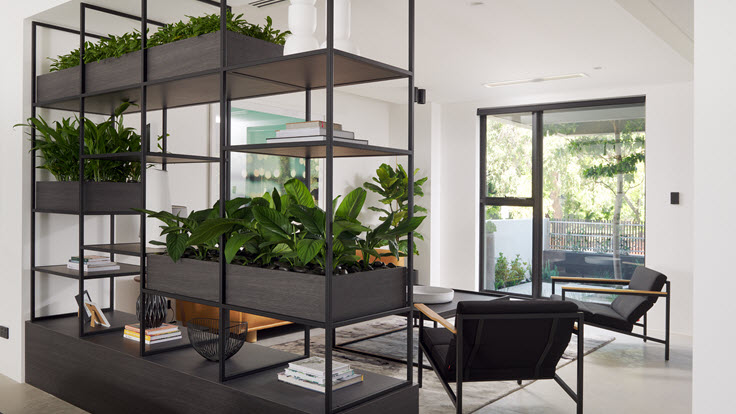
Recently, we have been spending far more time at home, so it makes sense that people are putting more effort into building a house that is sustainable and eco-friendly.
Not only is it good for personal well-being, but reducing your property’s environmental footprint is also a fantastic investment as it reduces living costs and adds value to your property.
If you have plans to build your next dream home, here are some ways you can make it more sustainable according to Webb and Brown-Neaves Designer – Innovation New Product, Joseph Calasara.
“It’s now more achievable than ever to have a home with a high energy rating. The Highline is a great example of how a home can be built to live and grow with you. With an enviable energy rating of 8.1 starts, it provides a myriad of considered features to reduce its footprint – material selection, climate responsive design, water efficient tapware and water wise landscaping all contribute to the environmental performance of a home,” Mr Calasara said.
1. Biophilia
Mr Calasara explains Biophilia is very important to the overall aura of a home and can significantly improve your mood and well-being.
“Biophilia explores the connection of nature in the home through the use of natural light, ventilation, green spaces, materials and views of trees to improve the health and wellbeing of humans. Incorporating planting within the home not only assists in generating a deeper connection to the outdoors, but also has been shown to greatly improve our wellbeing by cleaning the air, absorbing toxins, increasing humidity and producing oxygen.
“Studies have shown that including plants in your indoor space can boost your mood, increase productivity, concentration and creativity. They have also been linked to the reduction of stress and illness,” Mr Calasara said.
2. Smart technology
Smart technology is not only time efficient, but it can also save you thousands of dollars by using minimal energy.
It is designed to be as effortless as possible, from keeping track of your energy use to decreasing it through automation, some devices can help you lower the amount of water and electricity you use, which in turn reduces your home’s environmental impact.
Mr Calasara explains there are a number of ways you can integrate smart technology into your home, such as;
- automated garage control
- intercom security and lighting
- live energy monitoring
- smart toilet
- switch glass partition
- Bluetooth connectivity
- multidimensional mirror.
3. Electric charging station
Mr Calasara said having a dedicated electric charging station in your home promotes eco conscious living now and into the future.
4. Solar panels
Solar panels significantly reduce a home’s overall footprint, according to Mr Calasara.
Solar power systems derive clean, pure energy from the sun. Installing solar panels on your home helps combat greenhouse gas emissions and reduces our collective dependence on fossil fuel.
5. Cross flow ventilation
Cross flow ventilation essentially eliminates the need for air conditioning, reducing living expenses and more importantly, the impact on the environment.
Designing your home so that it takes advantage of cross flow ventilation can really work wonders in keeping your house cool, without the need for power.
“Having cross flow ventilation in your home ensures the home remains efficiently cooled throughout the year without depending on the performance of the home’s fully ducted and high-energy rated air-conditioning system,” Mr Calasara said.
6. Climate responsive design
Having an eco-friendly and sustainable home starts as early as the design.
Mr Calasara recommends incorporating a climate responsive design so your home is set up to be far more environmentally conscience from the start.
7. Water wise features
Mr Calasara said is it a good idea to promote a water efficiency in a home.
He recommends installing a smart reticulation system that can monitor local weather patterns and automatically adjust schedules based on forecast temperature, rainfall probability, wind and humidity.
“You can also think about how to be water wise in your garden, for example, installing a thick layer of mulch to decrease evaporation. Mulching is key alongside a very water wise irrigation system,” Mr Calasara said.
Source: reiwa.com.au




